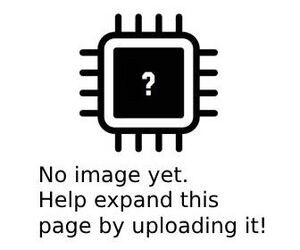(Created page with "{{stub}} {{Repair Guide |Device= |Affects parts= |Needs equipment= |Type= |Difficulty= }} ==Problem description== Possible Diagnoses for Green or Purple Vertical bars on the display thumb|Example image (Figure 1) -- No image yet. Help expand this page by uploading it! ==Symptoms== *Vertical lines on the screen ==Solution== The most important diagnostic test to perform, is checking to see if the machine properly displays an image on a KNOW...") |
No edit summary |
||
| Line 1: | Line 1: | ||
{{Repair Guide | {{Repair Guide | ||
|Device= | |Device=MacBook Pro A2141 | ||
|Affects parts= | |Affects parts=Motherboard, Display assembly | ||
|Needs equipment= | |Needs equipment=multimeter, soldering iron, soldering station, BGA rework station | ||
|Type= | |Type=Soldering, Micro-Soldering | ||
|Difficulty= | |Difficulty=4. Specialist | ||
}} | }} | ||
{{stub}} | |||
==Problem description== | ==Problem description== | ||
Possible Diagnoses for Green or Purple Vertical bars on the display | Possible Diagnoses for Green or Purple Vertical bars on the display | ||
Revision as of 09:59, 1 October 2023
| DustGate repair | |
|---|---|
| Device | MacBook Pro A2141 |
| Affects part(s) | Motherboard, Display assembly |
| Needs equipment | multimeter, soldering iron, soldering station, BGA rework station |
| Difficulty | ◉◉◉◉ Specialist |
| Type | Soldering, Micro-Soldering"Micro-Soldering" is not in the list (Soldering, Teardown, Part replacement, Cleaning, Software, BGA, General) of allowed values for the "Repair Guide type" property. |
This article is a stub. You can help Repair Wiki grow by expanding it
Problem description
Possible Diagnoses for Green or Purple Vertical bars on the display
Symptoms
- Vertical lines on the screen
Solution
The most important diagnostic test to perform, is checking to see if the machine properly displays an image on a KNOWN GOOD display. If the vertical bars are still present on a known good display, the issue is likely related to the GPU or VRAM.
Unfortunately, there is no definitive way to determine a VRAM fault from a GPU fault, especially since when this issue is present, the board usually will not boot into an OS. You can try heating the GPU at 100C for 3-5 min to see if the issue will temporarily resolve, if it does, the GPU is the cause of the issue. It is important to note that heating a flip chip at a low temperature for diagnostic purposes is not a solution, and will not "fix" the problem. Higher temperatures should not be used, as they can negatively affect the life of the chipset if it is not the problem. If no change in the problem is seen, the VRAM may be the issue.
If the GPU is the issue, you can reball one from a donor board as long as the proper tools are used. You should be using a BGA station, and you should not exceed 260C during the removal or replacement of the chip. Use 63/37 solder to reball the new chip. DO NOT REBALL THE OLD CHIP. THIS WILL NOT SOLVE THE PROBLEM. If the VRAM is the issue, replace all VRAM chips at the same time.
